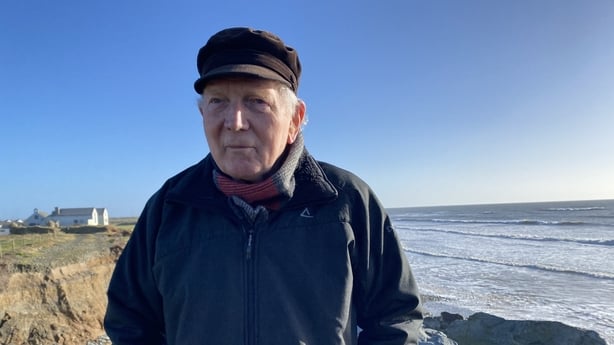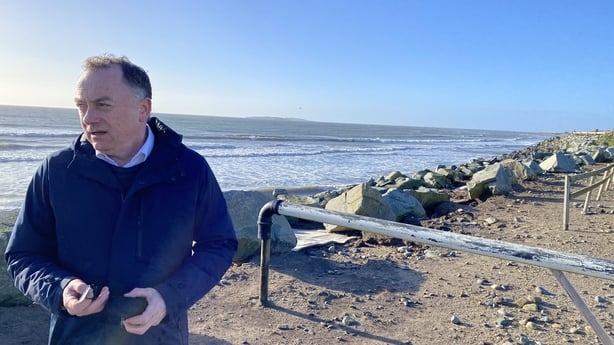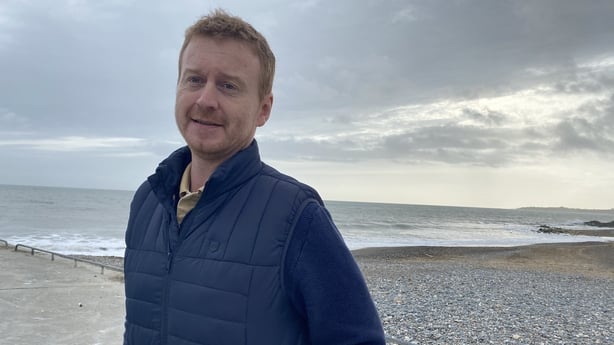The latest EPA report, the EPA’s first climate change assessment, sheds light on the many problems posed by one of the biggest challenges facing the planet, including many areas around Ireland It is felt very keenly.
Coastal erosion has always been a problem, but it seems to be happening more frequently in recent years. This is thought to be the result of both global sea level rise and an increased occurrence of storms blowing in from the ocean.
Unsurprisingly, Ireland’s softest sandy coastlines will be the most vulnerable, and without mitigation measures, parts of the land will continue to fall into the sea, whether in the short or long term.
Roads will be washed away and homes and farms will be at risk of being lost forever.
This is the case along the south-eastern tip of County Wexford and other coastlines around the island.
At Seaview, a few kilometers from Kilmore Quay and a few kilometers from Rosslare, householders and farmers have watched for years as cliffs tumble onto the shore.
“I’ve noticed a lot of change, especially in the last 10 or 15 years,” said Frank Lonergan, a local resident who has lived in the area since the mid-1970s.
“For many years there was really very little erosion, but I especially remember the winter of 2013 and 2014, when we had about six storms in a little over two months and during that time Damage has occurred on the coast here. ”

The access road used by residents, particularly those living in the area’s 14 Conybeg cottages, has been washed away several times and is now being washed away for the fourth time.
“You can see the eroded shoreline coming very close to the current access road,” Lonergan said, noting that the people in these cabins would be concerned.
But everyone in the area is wary of what’s happening on their shores.
Mr Lonergan said: “We’re very concerned because we’ve had several storms in the last few weeks that have taken more chunks off the cliffs behind here. It’s very soft. It’s the material,” he said.
He said reports of sea level rise were “very relevant to this issue” and looking to the future, “coastal protection is very important here.”
Wexford County Council coastal engineer George Colfer said erosion had increased significantly in recent years.
“We have done some restoration work to protect the public road behind me and there are plans to widen it to reduce the risk of erosion… in the last six or seven years. Erosion seems to be accelerating.”

In the past 14 months alone, he said, the land has receded by 6 to 13 meters in some places.
“The rate of erosion and its acceleration is incredible. I think we’re experiencing more intense and more frequent storms, which weakens the cliffs, making them more susceptible to erosion and adding to the problem. It’s going to get worse.” ”
He said sea level rise was “certainly a factor” and it was important the council continued to monitor the situation.
“Generally what we are doing is installing coastal protection in the form of rock armor to protect public roads and to protect 14 homes that are at risk of coastal erosion. We are now planning to extend it and extend it by 200 meters.” ”
Meanwhile, farmer Jamie Ryan said that in Balitrent, along the coast, changes have been noticeable even since autumn.
“We’ve had some really bad storms recently and it’s really worrying.
“This is 20 feet long [sand] The embankment is on the left, so in two more years, theoretically…the water would turn clockwise and flood all the way to the bottom edge of the farm.
“That’s a big concern. There’s a lot of land here, it’s not the best arable land, it’s all dunes, but it’s an important area and an area of special scientific interest.
“There are 25 acres of dunes and lowlands directly below it that are suitable for grazing in the spring until about June, and although they tend to dry out after dry summers, they are valuable grazing land.”
Ryan added that rock armor is “very expensive” but is the only solution “for this particular region, which is very sensitive and disappears very quickly.”

Generally standing on a coastline that has receded several meters in the past few months, he added that the issue is a “huge concern” as he and his family look to the future.
“If you come back here in two years, we won’t be standing here. We’ll probably be standing 20 feet away.”
According to the EPA, storm surges and polar waves are an “increasing threat to Ireland as sea levels continue to rise” and could cause problems not only on regional coastlines but also in cities such as Dublin, Limerick and Cork. It is said to be expensive. and to critical infrastructure. ”
“Soft-sediment coastlines are particularly at risk,” the EPA said in its report.
“Predictions of storm change are highly uncertain, creating large uncertainties in the frequency and strength of future large waves.”
One of the report’s authors, Professor Conor Murphy from Maynooth University’s Department of Geography and a member of the Irish Climate Research Unit, said: “When it comes to climate change in Ireland, our coast is right on the front line.”

According to Professor Murphy, up to 20% of coastlines are exposed to erosion.
“Sea level rise is clearly being driven by climate change. As temperatures rise, ocean water expands, major ice sheets melt, and land runoff increases,” he added.
“But even on the land itself, we’re seeing natural ecosystems degraded and conservation reduced. So this is a complex issue, but it’s largely influenced by what’s happening with the climate.”
Professor Murphy said sea levels could rise between half a meter and one meter over the next century or so.
“We care for our coastal environments, understand the importance they bring to conservation, think about how to better govern and manage our coastal environments, develop adaptation strategies and better manage future impacts. “We need to be prepared,” he said. .
“Sea level rise is a creeping danger and we need to act now to ensure the resilience of coastal environments. This requires working with people, working with nature and having stronger governance structures. is.”
